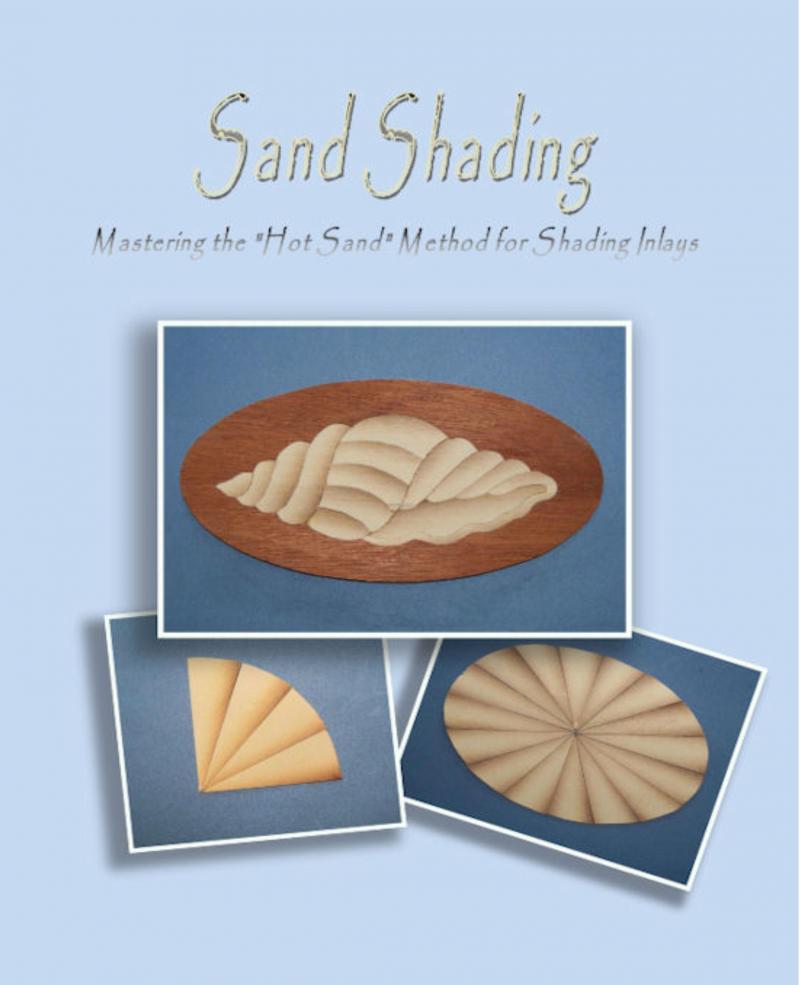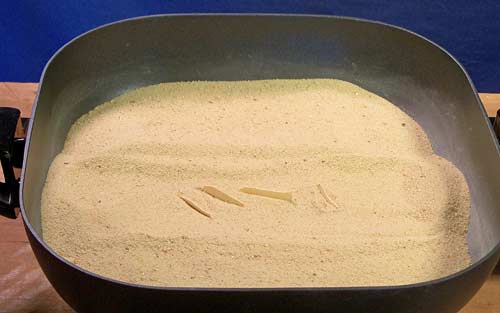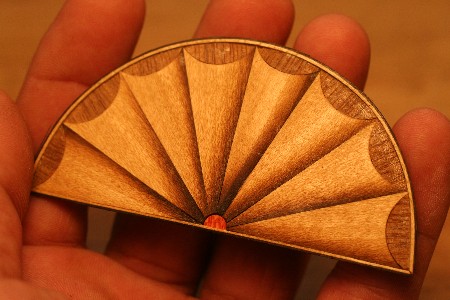There are lots of ways you can make a project look good when finishing. You can stain, dye or oil the piece to give it depth or shimmer.
But, there’s a classic technique that uses veneer, sand and heat to add depth to inlays. Woodworker Ralph Bagnall has written his first book on the subject of sand shading, entitled Sand Shading: Mastering the hot sand method for shading inlays. It offers very simple step by step instructions on the process that should encourage even the beginner to try their hand.
Ralph lays out the process in clear, easy to follow steps. The first piece of ‘specialized’ equipment used to be a ubiquitous piece of kitchen cookware – an electric skillet. By using the heat control on this appliance, you can get accurate temperature control in the sand, which gives you control over the shade you impart to your inlay pieces. Ralph observed that while you can buy a new one of these skillets for about $30 in a local mega-mart, you can probably score one at a thrift store or yard sale for uber-cheap.
The next specialized component is sand… but not just any sand. You want to pick up sand with the finest grit possible to ensure a more even shading on the inlay pieces. Ralph suggests leveling sand, used to level patio pavers. His suggestion to thoroughly dry the sand using the electric skillet is one of those a-ha tips that you expect from a well-conceived book about a challenging technique.
As you might imagine, the shading is achieved by burying the inlay material in the sand and scorching it slightly. During each step of the process, Ralph shows the tips and tricks for shading simple fan inlay pieces all the way to fancier shell designs. He also goes into the material selection process, showing which species of wood works the best (Ralph loves holly for this), the best way to assemble the inlay for installation into the final piece and how to get creative in designing your own projects.
Ralph’s book brings to light in great detail this classic but seemingly lost technique. Given the clear step-by-step instructions and common equipment and materials, this is going to become one very popular read.
Congratulations to Douglas Bordner who won a copy of Ralph’s book! Thanks everyone for participating!
Now, here comes the fun part. Ralph has offered me the opportunity for one of my readers to get a free copy of his book for his or her very own. So, let’s break out a classic game played by radio stations. Send me an e-mail at tom@tomsworkbench.com with the answer to this question:
What was the first project I built that I ever used veneer on, and what was the species of veneer I used?
I’ll take all the correct answers I receive until 8 p.m. Eastern time today and have one of my sons randomly select from the correct answers submitted. Good luck!



